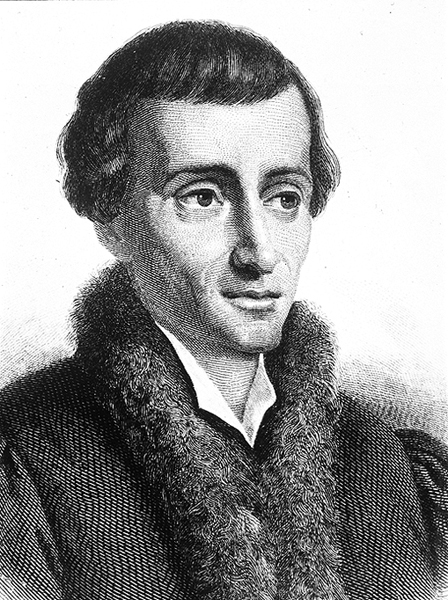
News accounts of the Pope’s visit to Poland this past June reported that John Paul II visited the birthplace of Nicholas Copernicus and praised the astronomer’s scientific discoveries. This gesture of praise would be unremarkable for anyone else on the planet, but for the Pope to praise this Renaissance scientist (who lived from 1473–1543) is deeply symbolic. Copernicus, as any schoolchild should know (if they still teach such things), discovered, on the basis of evidence and mathematics, that the earth revolves around the sun and not vice versa. He didn’t have all the details right (it was Isaac Newton who later realized that the planetary orbits were ellipses, not perfect circles), but his theory changed the face of science and began a crisis in Western religion that has lasted to the present day.

The problem with Copernicus’s theory is that the Bible sees things differently. According to Genesis 1:14–18, God set the sun, moon and stars in the dome of heaven so that the sun could rule the daylight and the moon could rule the night. The sun and moon take turns rising and setting on their heavenly path. As Ecclesiastes describes this celestial motion: “The sun rises and the sun sets, and it hastens back to its place, where it rises again” (Ecclesiastes 1:5). The earth, in turn, rests upon subterranean waters (Genesis 1:9; Psalm 24:1–2) or on cosmic pillars or foundations (1 Samuel 2:8; Psalm 104:5). This is a picture of a geocentric universe, which Copernicus’s theory—and the later proofs of Galileo and Newton—completely overturned.
Copernicus’s ideas were declared heretical by the Catholic Church. On this issue, Martin Luther and other Protestant reformers agreed with the Pope. Where the Bible’s plain testimony came into conflict with scientific theory, there could be no compromise. The Bible’s description was affirmed as necessarily true, and science was forced to keep silent. When Galileo, the most famous scientist of his day, was declared a heretic for publicly upholding Copernicus’s theory, the great scientist recanted in order to save his life. But he is rumored to have said when leaving the Inquisition chambers, “Still, it does move.” Denying the truth, Galileo was saying, does not change anything—the earth still revolves around the sun.
Now, over four hundred years later, the Pope publicly praises Copernicus. (To his credit, the Pope several years ago also apologized for the ban on Galileo.) What implications does this have for the often bitter relationship between religion and science?
On the one hand, it may not have any because no one but a few looneys in the Flat Earth Society disagrees with the scientific model of the solar system. The success of the Apollo astronauts and the beautiful photos from the moon would be sufficient warrant for this theory even if one didn’t understand Newton’s laws of motion. The Pope is simply affirming what no reasonable person on the planet denies. To agree that the earth revolves around the sun is an extremely uncontroversial stand—even Democrats and Republicans agree on this one.
But in another way, the Pope’s praise is significant in reminding us of the still unresolved relationship between the Bible and science. In this instance, since the Copernican model is obviously true in its basic sense, the Bible’s picture of the physical cosmos is false—that is, scientifically false. While this is uncontroversial in the case of the earth’s rotation around the sun, it is still a problem in many other areas of scientific and religious discourse today. Issues such as evolution, abortion, women’s rights, gay rights and even organ transplants are often contested along the lines of the conflicting testimonies of the Bible and science, or in more general terms, of faith and reason.
Where does one draw the line between scientific truth and religious truth? What are the valid sources of knowledge about the universe, life—about everything? The Pope’s praise of Copernicus reminds us that the lines are often messy and ill defined. The Bible may be false in some respects and true in others. It may be false that the earth rests on pillars but true that one should love thy neighbor as thyself. These may be different kinds of truth, and it may be important to allow for different levels of truth and falsity in a single biblical text. The Bible, it seems, also moves in and around the truths and rumors that populate our universe.

